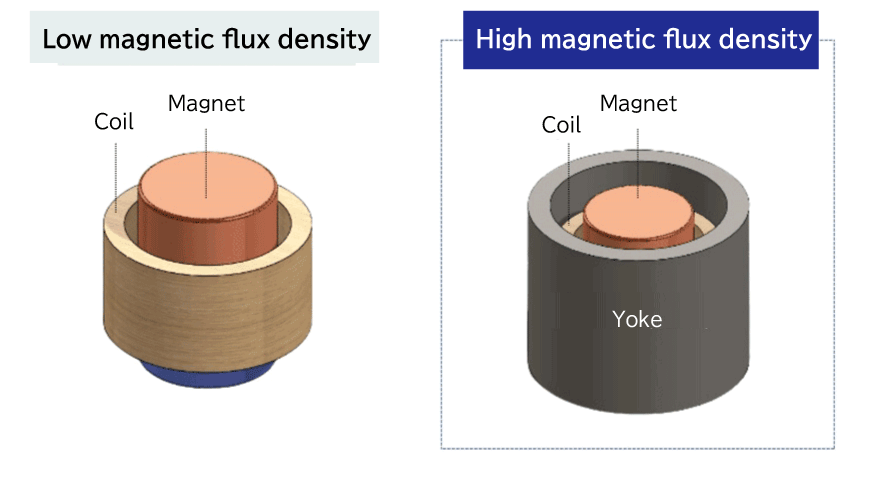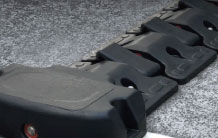
Energy harvesting from vibrations for IoT devices
Vibration Powered Generators: Vibration Powered Devices.
From vibration energy to electrical energy: Vibration-powered devices eliminate the need for power cords and batteries in IoT devices.
A wide range of energy harvesters
Orbray offers a wide line-up of high-output vibration-powered devices, from prototyping to customization, using the energy harvested from a large variety of movements.
Shaking type
Shaking the device left and right or up and down generates electrical energy.
Shaking:140mW
Rotating:7mJ
Switch type
Pressing and releasing a switch generates electrical energy.
Pushing button:5mJ
Releasing button:5mJ
Slider type
Sliding and releasing a knob generates electrical energy.
Releasing slide:9mJ
Curved type
The movement of a curved object generates electrical energy.
Shaking:100mW
Tilting:15mJ
Rotating:30mJ
Lever type
Pushing or pulling a lever generates electrical energy.
Pushing lever:30mJ
Pulling lever:30mJ
Hinge type
Rotation generates electrical energy.
Rotating:30mJ
High power output exceeding 100mW
Generating tens or hundreds of times the power of conventional devices, Orbray’s vibration power generators incorporate a magnetic yoke around the coil and magnet. The yoke increases the magnetic flux density around the coil, resulting in high power generation.

Power generation from slow movements
Select vibration power generation devices are capable of producing a predetermined amount of power from very slow movements. For example, vehicle detection sensors can generate power regardless of the movement speed by storing energy internally and releasing it all at once. This makes it possible to operate devices that usually cannot be activated by such slow movements.
High durability
Actuations of the power generation components: > 10 million actuations*
* Product bench test; internal analysis
Vibration power generation devices achieve high durability by reducing mechanical loads of moving parts, reducing friction and mass of moving parts, and securing the required amount of power from small movements.
Frequently asked questions(FAQ)
- Q:I would like to know what vibration powered devices look like. Do you have any samples?
- We have demonstration devices available. Please contact us for more details.
- Q:Can any type of movement be used to generate electricity?
- We have a diverse lineup of products that cover a wide variety of vibration sources. The amount of power that can be generated depends on the type of movement. We will optimize each device to meet your needs.
- Q:We don't know the amount of vibrational energy available at the installation location. Can you help us measure the vibration and optimize the generator?
- Of course! We will use accelerometers to measure the types and amounts of vibration, and design your vibration-powered device to meet your needs.
- Q:What is the minimum order size for prototypes?
- There is no minimum order size for prototypes.
- Q:How sensitive is the generator to the vibration frequency?
- We design each device to generate power most efficiently at the given frequency. However, the Q-value of the resonance frequency is gentle, so power is generated even before and after the design vibration event.
- Q:How long do these devices last?
- The power generation mechanism is semi-permanent. Actuators and other mechanical parts may have shorter lifespans. Durability of these parts can be adjusted to meet your needs.
- Q:Can these devices be made waterproof?
- Yes. This and all other design specifications can be defined by the customer.
- Q:How big are the devices?
- Vibration devices are about 30 x 20 x 50 mm and roughly 60 g, depending on the specifications.
- Q:Is it possible to miniaturize the devices and install them in wearables?
- Miniaturization is difficult. We have optimized our devices to be able to power commercially available sensors and transmitters with a single vibration event. Therefore, we have opted for larger sizes that capture more energy, and have prioritized durability and reliability.
- Q:How should vibration devices be installed?
- We recommend using double-sided tape or screw installation.
- Q:Can sensor data be transmitted to our cloud network?
- Yes. Sensor data can be collected at an IoT gateway and sent to any location you specify.
Related pages
Energy harvesting Blog
contact
Please complete the following form and then click the Confirm button.









